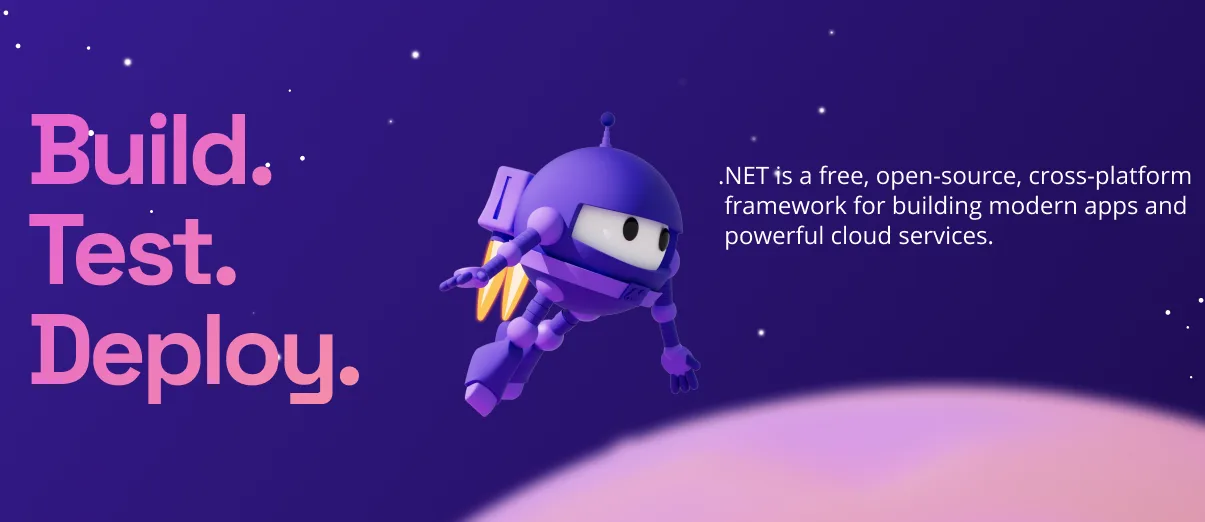.NET 10 is now available: the most productive, modern, secure, intelligent, and performant release of .NET yet.
.NET Blog
Free. Cross-platform. Open source. A developer platform for building all your apps.
Featured posts

Announcing .NET 10
Announcing the release of .NET 10, the most productive, modern, secure, intelligent, and performant release of .NET yet. With updates across ASP.NET Core, C# 14...
Latest posts

Announcing ASP.NET Core 2.0
The ASP.NET team is proud to announce general availability of ASP.NET Core 2.0. This release features compatibility with .NET Core 2.0, tooling support in Visual Studio 2017 version 15.3, and the new Razor Pages user-interface design paradigm. For a full list of updates, you can read the release notes and you can check the list of changed items in the ASP.NET Announcements GitHub repository for a list of changes from previous versions of ASP.NET Core. The latest SDK and tools can be downloaded from https://dot.net/core. Read the .NET Core 2.0 release announcement for more information and watch the launch video...

Web Applications with ASP.NET Core Architecture and Patterns guidance (Updated for .NET Core 2.0)
Updated for ASP.NET Core 2.0 (Nov. 15th 2017) Earlier this year, we published this eBook/Guide and sample application offering guidance for Architecting Modern Web Applications with ASP.NET Core and Microsoft Azure. We have recently published updates to the eBook (2nd edition) and sample application to bring them in line with the latest releases of ASP.NET Core 2.0 and Entity Framework Core 2.0. What's new The eBook/Guide has been updated to ASP.NET Core 2.0, .NET Standard Library 2.0 and Entity Framework 2.0 and .NET Core 2.0 in general, while referencing to the new code implemented in the updated sample app f...

NuGet Fall 2017 Roadmap
Over the past 6 months, the NuGet team has been working hard to ensure the growth of the .NET ecosystem. NuGet has grown significantly during this timeframe: NuGet.org is closing in on 4 billion packages served (up from a billion packages just a year ago), we have enabled new .NET scenarios such as .NET Standard 2.0, and have improved the overall user experience of package authors and consumers using the service. Yet, a lot more remains to be done. Along the way, we made some mistakes that our community has rightfully called us out on. We made changes to the client and the server that took some users by surprise...

.NET Framework August 2017 Security and Quality Rollup
Updated: 2017.08.10 Today, we are releasing the August 2017 Security and Quality Rollup Update. This update applies to Windows 10 and Windows Server 2016. Security There are no new security changes for the .NET Framework this month. Quality and Reliability Networking Note: The VSTS bug number listed above are provided so that you have a tracking number that you can refer to, search for and use with Customer support for each improvement. The actual VSTS bugs are only accessible to Microsoft employees. Getting the Update The Security and Quality Rollup is available via Windows Update, Windows Server Update ...

The week in .NET – Rezoom.SQL, Protobuf in Orlando, and links!
Previous posts: Tool of the week: Rezoom.SQL Rezoom.SQL is an F# ORM for SQL databases. It integrates with the F# compiler via a generative type provider to statically typecheck its own dialect of SQL. It knows how to translate this SQL dialect to various backends. Currently it supports SQLite, SQL Server, and PostgreSQL. The type provider makes it fast and easy to write SQL statements, run them, and consume their results from your F# code with full type safety. You don't need to install any editor extensions or custom tooling, just add a NuGet package and you're off and running writing code like this:. ...

Welcome to the .NET Framework 4.7.1 Early Access!
Last Updated: 9/28/2017 Today, we are happy to share the .NET Framework 4.7.1 Early Access build with the Developer Pack. The .NET Framework 4.7.1 Developer Pack lets developers build applications that target the .NET Framework 4.7.1 by using Visual Studio 2017, Visual Studio 2015 or other IDEs. This is a single package that bundles the .NET Framework 4.7.1, the .NET 4.7.1 Targeting Pack, and the .NET Framework 4.7.1 SDK. The .NET Framework 4.7.1 is the next version of the .NET Framework. It is currently feature-complete and in the testing phase. We are asking for individuals and companies to help validate the q...

Microservices and Docker containers: Architecture, Patterns and Development guidance (Updated for .NET Core 2.0)
Updated for .NET Core 2.0 "wave" of technologies (Nov. 15th 2017) Earlier this year, we published this eBook and sample application offering guidance for architecting microservices and Docker containers based applications. We have recently published updates to the eBook (2nd edition) and sample application to bring them in line with the latest releases of .NET Core 2.0 many other updates coming along as part of the same "wave" of technologies. This is the update list summary for both, the eBook and the sample application: Th...

.NET Framework July 2017 Cumulative Quality Update for Windows 10
Today, we are releasing a new Cumulative Quality Update for the .NET Framework. It is specific to Windows 10 build 1703 (Creators Update). Previously released security and quality updates are included in this release, including the July 2017 Security and Quality Rollup, the July 2017 Preview of Quality Rollup and the June 2017 Cumulative Quality Update for Windows 10. Note: This release is considered a July release even though it is being released in August. Quality and Reliability The following improvements are included in this release. Most changes are for the .NET Framework 4.7. .NET Framework 3.5 changes ar...

The week in .NET – Nuke, Warden.NET, .NET in Bangalore, and links!
Previous posts: Tool of the week: Nuke Nuke is a cross-platform build automation system with C# DSL, much like Cake. It features auto-completion, refactoring, and navigation in all IDEs. Nuke avoids complexity, and integrates as a normal project. Package of the week: Warden.NET The System.Diagnostics.Process class while useful does not have a concept for parent applications; while Windows itself does track parents, it does not track grandparents and processes can quickly become orphaned. Which is where Warden comes in. Warden.NET is a simple to use library for managing processes and their states. U...
